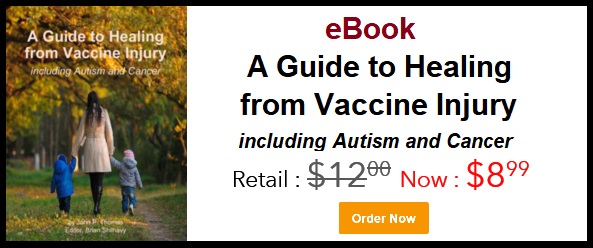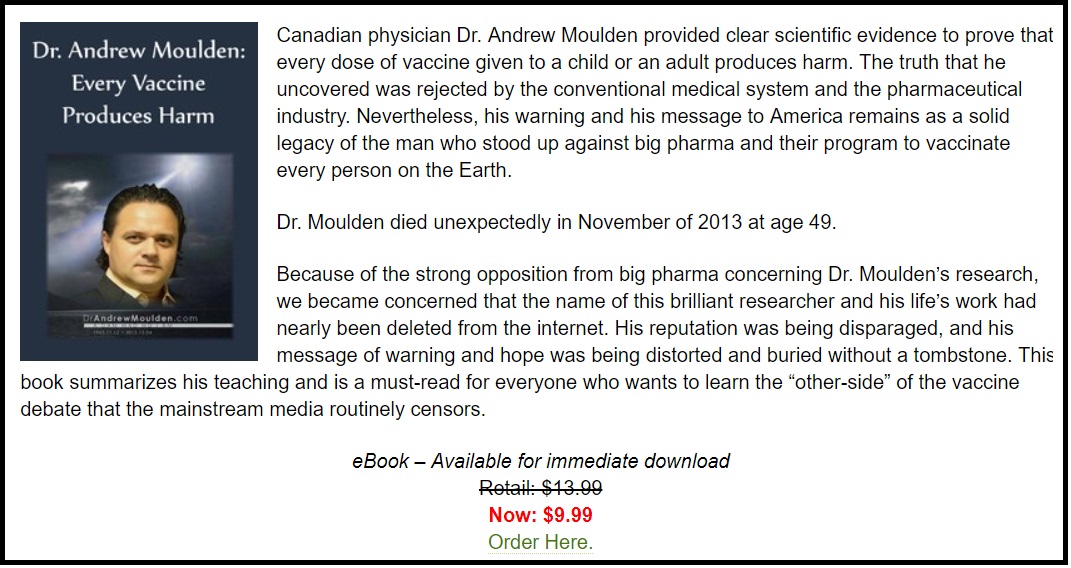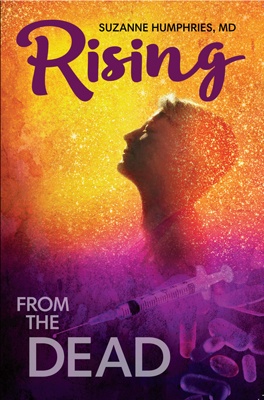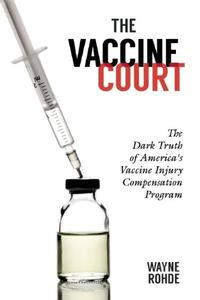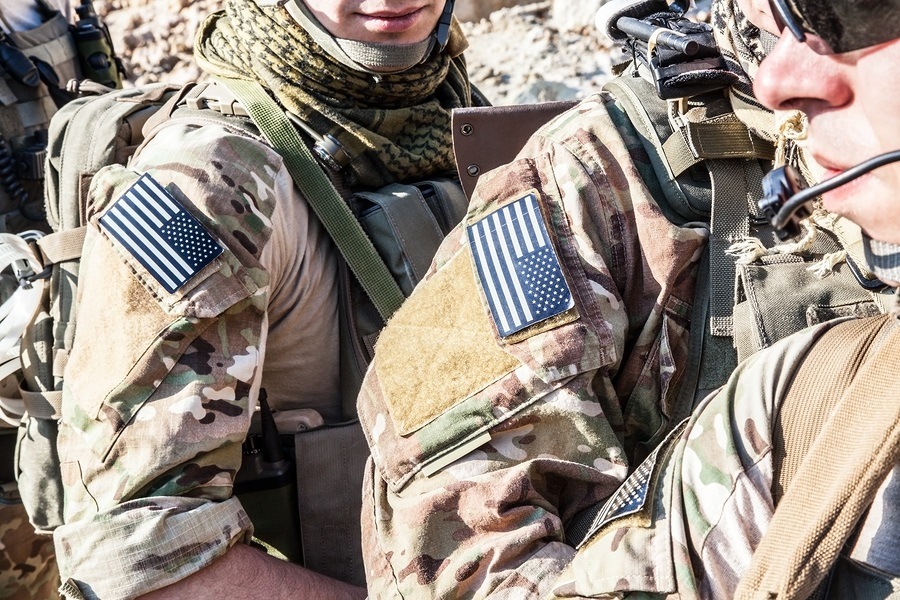
Responding to the coronavirus outbreak in China, where tens of thousands of citizens suspected of being infected with coronavirus (COVID-2019) have been detained and involuntarily taken to quarantine camps,1 on Feb. 1, 2020 an executive order was issued by the U.S. Department of Defense (DoD), including the Joint Chiefs of Staff, directing the U.S. Northern Command to implement the DoD’s Global Campaign Plan for Pandemic and Infectious Diseases.2
On Feb. 12, 2020, orders were sent to the U.S. Marine Corps3 and Navy4 directing “geographic combatant commanders to execute their pandemic plans in response to the NCOV outbreak.”
The U.S. Marine Corps directive told combat commanders to “review, update and validate existing disease containment plans and policies in order to implement procedures for response, isolation, quarantine, restriction of movement and community-based intervention” and to “become familiar with authority to declare a public health emergency, restrict movement, quarantine and isolate [and[ coordinate with Federal, State, local, and military treatment facilities and public health emergency officials…”
The U.S. Navy directive stated, “DoD will continue to follow CDC guidance and comply with local public health authorities during this outbreak.”
As of Feb. 18, 2020, there had been 75,198 cases of COVID-2019 detected globally and 2,009 deaths, with all but 1,013 cases and 5 deaths occurring in China.5
The U.S. now has 29 confirmed cases being treated on military bases or in a biocontainment facility.
Reports by Chinese Scientists Raise Questions About Origin of Coronavirus
At the same time, over the past week new questions have resurfaced about whether the novel coronavirus (COVID-2019) can be traced back to scientific research conducted in Wuhan labs, a subject that has been widely discussed since January after the outbreak in China emerged.6
According to a Feb. 16 report in the Daily Mail, scientists at the South China University of Technology have written a paper questioning whether research on bats and respiratory diseases at the Wuhan Institute of Virology and the Wuhan Centers for Disease Control (WCDC) created a new chimeric coronavirus capable of infecting humans.
The WCDC is located just 300 yards from the fish and wildlife food market thought to be the origin of the coronavirus and is adjacent to the Union Hospital where the first group of doctors were infected.7
On Feb. 15, a paper was published in The Lancet by Chinese scientists, “Clinical features of patients infected with 2019 novel coronavirus in Wuhan, China.”
The authors stated, “In December, 2019, a series of pneumonia cases of unknown cause emerged in Wuhan, Hubei, China, with clinical presentations greatly resembling viral pneumonia” and they described 41 cases hospitalized by Jan. 2, 2020, of which 66 percent (27 people) had been exposed to the food market and 15 percent (6 people) died:
Most of the infected patients were men (30 [73%] of 41); less than half had underlying diseases (13 [32%]), including diabetes (eight [20%]), hypertension (six [15%]), and cardiovascular disease (six [15%]).
Median age was 49·0 years (IQR 41·0–58·0). 27 (66%) of 41 patients had been exposed to Huanan seafood market…Complications included acute respiratory distress syndrome (12 [29%]), RNAaemia (six [15%]), acute cardiac injury (five [12%]) and secondary infection (four [10%]). 13 (32%) patients were admitted to an ICU and six (15%) died.8
The World Health Organization (WHO) continues to maintain that the new virus spontaneously jumped from animals, most likely bats, to humans in the Wuhan market selling seafood and wildlife animals and that online speculation to the contrary is “misinformation.”
In early February, International Business Times reported that WHO had teamed up with Google to battle online “misinformation” about the epidemic.9
A Feb. 14 CNBC report revealed that the WHO hosted a meeting at Facebook’s Menlo Park, California campus with Google, Amazon, You Tube, Twitter, Verizon and other big tech companies to discuss how to “tamp down on misinformation about the coronavirus.10
CDC Preparing for Novel Coronavirus to “gain a foothold in the U.S.”
According to the Atlanta Journal Constitution, on Feb. 12 Dr. Nancy Messonnier, director of CDC’s National Center for Immunization and Respiratory Diseases, told media during a conference call “we can and should be prepared for this new virus to gain a foothold in the U.S.”11
On Feb. 14, the U.S. Centers for Disease Control (CDC) announced that in Los Angeles, San Francisco, Seattle, Chicago and New York City, the agency had begun monitoring Americans with flu-like symptoms, who test negative for influenza, by additionally lab testing them for coronavirus.
According to CNBC, the CDC intends to add more cities in the coming weeks in an effort to achieve a “national surveillance” system that would act as an early warning that COVID-2019 is spreading, which would “trigger a change in our response strategy,” said Messonnier.12
A report by Reuters stated:
The CDC’s current strategy to fight the virus includes quarantines and travel restrictions, but that may change if the virus takes hold in the United States and begins to spread. In that scenario, the CDC will put in place “social distancing” strategies such as cancelling mass gatherings, using telemedicine, tele-schooling and remote working to try to disrupt the spread of the virus.13[xiii]
Americans on Diamond Princess Cruise Ship Test Positive
More than 600 Americans, who were evacuated from Wuhan, China in early February, have been in quarantined in the U.S. and some have already been released.
Other Americans suspected to have come in contact with COVID-2019 have been quarantined on cruise ships. On Feb. 16, about 380 U.S. citizens on the Diamond Princess cruise ship quarantined in a Japanese harbor, who had not tested positive for coronavirus and were symptom-free, were offered seats on U.S. State Department chartered flights transporting them back to quarantine centers on military bases in California and Texas.
According to CNBC, about 300 Americans accepted the State Department’s offer to fly back to the U.S., while nearly 100 others with no symptoms of illness decided to stay on the ship.14
On Feb. 17, the U.S. State Department and Department of Health and Human Services issued a joint statement acknowledging that 14 asymptomatic American evacuees from the Diamond Princess cruise ship were allowed to fly on the chartered flights despite testing positive for coronavirus before getting on the planes.15
According to USA Today, when the planes landed at military bases in Texas and California, 13 passengers who had tested positive for the virus were flown to the University of Nebraska Medical Center and Nebraska Medicine quarantine and biocontainment facility in Omaha for treatment.
All of the Americans returning from the Diamond Princess will remain in quarantine for 14 days. 16
By Feb. 18, there had been 542 cases of COVID-2019 diagnosed among the cruise ships’ 3,700 passengers and crew. 17 Dr. Anthony Fauci, Director of the National Institute of Allergy and Infectious Diseases at the National Institutes of Health, told USA Today that, “The quarantine process failed.”18
Posse Comitatus Act of 1878
The scope of the mission of the U.S. Marines and U.S. Navy’s involvement in implementing the DoD’s Global Campaign Plan for Pandemic and Infectious Diseases in a civilian population is not clear as that Plan does not appear to have been publicly released by DoD.
In general, however, the 1878 Posse Comitatus Act (PCA) prohibits the carte blanche use of military forces in civilian law enforcement in the U.S.19
According to an essay for the Encyclopedia Brittanica:20
The willful use of the army or air force as a posse comitatus or otherwise to execute the laws is a felony, unless the use is expressly authorized by the Constitution or an act of Congress.
The PCA directly applies only to the army and air force, without mentioning the navy, the Marine Corps, the Coast Guard, or the National Guard.
The National Guard is subject to Article I, section 8 of the Constitution, “To provide for calling forth the Militia to execute the Laws of the Union, suppress Insurrections and repel Invasions.”
The National Guard is under state control until called into federal service, and is authorized to enforce the laws upon the request of a governor.
Because the Coast Guard has a law enforcement function and is not under the control of the Department of Defense, it is not subject to the PCA.
Although the naval service is not mentioned in the PCA, Department of Defense regulations extend the PCA to the navy and Marine Corps.
Establishment of the U.S. Northern Command After 9/11
After terrorist attacks on the U.S. mainland on Sept. 11, 2001 (9/11), the U.S. Northern Command was established Oct. 1, 2002.
According to a 2008 report to Congress by the Congressional Research Service,
“In 2002, President Bush signed a new Unified Command Plan (UCP) establishing United States Northern Command (NORTHCOM) to provide command and control of the Department of Defense’ (DOD’s) homeland defense efforts and coordinate military support to civil authorities.”21
NORTHCOM’s area of responsibility includes the continental United States, Alaska, Canada, Mexico, and surrounding waters out to approximately 500 nautical miles, including the Gulf of Mexico and the Straits of Florida.
Headquartered at Peterson Air Force Base in Colorado, the NORTHCOM Commander also commands North American Aerospace Defense Command.22
U.S. Northern Command’s mission is to deter, prevent and defeat threats and aggression aimed at the United States, its territories, and interests. To this end personnel from the Army, Navy, Air Force, Marine Corps and Coast Guard are assigned to coordinate the protection of North America from external threats, drawing on the full capabilities of all U.S. military services, including the National Guard and Coast Guard, as necessary.
Additionally, the command is charged with providing defense support for civil authorities when approved by the President or Secretary of Defense. U.S. Northern Command (USNORTHCOM) also provides military resources and support to federal, state and local authorities.23
According to the USNORTHCOM website, so far it “has not had to respond to a large scale threat calling for military intervention” in U.S. territory.
It has primarily been used to respond to natural or manmade disasters, such as hurricanes, floods, wildfires, earthquakes and a massive oil spill in the Gulf of Mexico, emphasizing that “the philosophy behind USNORTHCOM’s participation in defense support for civil authorities was to be prepared at all times but only to act when requested and to depart just as soon as their support was no longer required.”24
The Feb. 12 DoD directives to the Navy and Marine Corps indicated that officials of U.S. Department of Health and Human Services (HHS) made the request to DoD and USNORTHCOM to get involved in anticipation of widespread coronavirus infections in the U.S. and that combatant commanders implementing DoD’s Global Campaign Plan for Pandemic and Infectious Diseases would be following directions from HHS and state and local public health officials.
Post 9/11 Model State Emergency Health Powers Act
After terrorist attacks on New York City and Washington, D.C. on September 11, 2001 (9/11), and subsequent reports of biological warfare threats against U.S. citizens, federal health officials immediately began preparing for mass anthrax and smallpox vaccination campaigns in the U.S.
At the same time, model state legislation entitled the Model State Emergency Health Powers Act (MSEHPA) was introduced in multiple states to rewrite state public health laws and give federal and state public health officials sweeping new power over citizens when public health “emergencies” were declared by the Secretary of HHS and state governors.
The CDC had given Professor Lawrence Gostin, PhD, of the Center for Law and the Public’s Health at Georgetown and Johns Hopkins University, funding to develop the model legislation, which is why MSEHPA could be quickly introduced in the states the month after 9/11.25 Among its provisions, MSEHPA gave power to public health officials to:
- take control of all roads leading into and out of cities and states;
- seize homes, cars, telephones, computers, food, fuel, clothing, firearms and alcoholic beverages for their own use (and not be held liable if these actions result in the destruction of personal property);
- arrest, imprison and forcibly examine, vaccinate and medicate citizens without consent (and not be held liable if these actions result in death or injury).
The ACLU and other NGO’s defending civil liberties,26 27 including the National Vaccine Information Center,28 29 opposed the MSEHPA for giving too much power to government health officials to detain, isolate and force vaccination and other medical interventions on citizens without their voluntary informed consent.30
The ACLU described the proposed model legislation as being “replete with civil liberties violations” and failing to “adequately protect citizens against the misuse of the tremendous powers that it would grant [government health authorities] in an emergency.”31
In August 2002, Professor Gostin and his colleagues at Georgetown and Johns Hopkins Universities argued for compulsory quarantine and treatment of individuals in an article for the Journal of the American Medical Association:32
Coercive powers are the most controversial aspects of any legal system… There similarly may be a need to exercise powers over individuals to avert a significant threat to the public’s health. Vaccination, testing, physical examination, treatment, isolation, and quarantine each may help contain the spread of infectious diseases. Although the vast majority of people probably will comply willingly (because it is in their interests and/or desirable for the common welfare), some compulsory powers are necessary for those who will not comply.
In 2003, Gostin replied to critics of the MSEHPA, pointing out that “The U.S. Department of Health and Human Services (HHS) in Healthy People 2010, similarly argued that strong laws are a vital component of the public health infrastructure and recommended that states reform their outdated statutes.”
He defended restraint of individual liberty in service to the public health: “When government acts to preserve the public’s health, it can interfere with property rights (e.g., freedom of contract, to pursue a profession, or to conduct a business) or personal rights (e.g., autonomy, privacy, and liberty).
The history of public health is littered with illustrations of trade offs between public health and civil liberties.” 33
Gostin questioned American values about “personal and proprietary freedoms” at the turn of the 21st century that opposed “substantial government presence in social and economic life,” and he expressed the opinion that 9/11 “reawakened the political community to the importance of public health:”
American values at the turn of the 21st century fairly could be characterized as individualistic. There was a distinct orientation toward personal and proprietary freedoms and against a substantial government presence in social and economic life. The attacks on the World Trade Center and Pentagon and the anthrax outbreaks reawakened the political community to the importance of public health. Historians will look back and ask whether September 11, 2001 was a fleeting scare with temporary solutions or whether it was a transforming event.
By 2011, 44 states had passed some form of the MSEHPA.34
After 9/11 Congress Gave More Power to Executive Branch
After 9/11, immediately there were allegations that terrorists possessed weaponized smallpox and anthrax that could be used against the U.S. mainland population. Pressure was placed on Congress to create legislation to protect the American public from future bioterrorism attacks.
Congress passed and President George W. Bush signed a series of new laws between 2002 and 2006 that gave expanded powers to the Executive Branch of the federal government and especially strengthened the authority of HHS during declared public health emergencies that involve disease control.
The Homeland Security Act of 200235 created the Department of Homeland Security (DHS), which assumed authority over existing federal agencies, including the U.S. Coast Guard, Federal Emergency Management Agency (FEMA), U.S. Immigration and Customs Service (ICE), U.S. Secret Service, Transportation Security Administration (TSA), among others. DHS works closely with HHS to respond to public health emergencies.
The National Vaccine Information Center opposed certain provisions in the Homeland Security Act of 2002.36
The Project Bioshield Act of 2004 (“Bioshield 1”)37 38 and Pandemic and All Hazards Preparedness Act of 2006 (“Bioshield 2”)39 40 set up and funded a public-private financial partnership between private pharmaceutical companies and HHS to research and develop bioterrorism and pandemic vaccines for use by U.S. civilian populations. The 2006 Act amended the Public Health Service Act to require the Secretary of HHS to lead all federal public health and medical response to public health emergencies.
The National Vaccine Information Center opposed sections of the 2004 and 2006 Bioshield legislation, calling for responsible congressional oversight on expanded authority granted to federal public health officials by Congress after 9-11.41 42
In the 2004 Bioshield Act, the U.S. Food and Drug Administration (FDA) was given an Emergency Use Authorization (EUA)43 that allows experimental drugs and vaccines designated as medical countermeasures (MCM) to be fast tracked to licensure during a federally declared public health emergency.
The Pandemic and All Hazards Preparedness Act of 2006 established the Biomedical Advanced Research and Development Authority (BARDA) under HHS as the central point of authority within the federal government responsible for conducting advanced research to develop civilian medical countermeasures in collaboration with the pharmaceutical industry.
BARDA is shielded from Freedom of Information Act (FOIA) requests. Drug companies are shielded from liability if the drugs or vaccines developed for and used in HHS declared public health emergencies cause injury or death and so are persons forcing civilians to use the products.44
In 2019, Congress passed The Pandemic and All-Hazards Preparedness and Advancing Innovation Act, strengthening the original 2006 Act.45 This new law increased funding for HHS programs and BARDA research to develop genetically engineered vaccines to respond to emerging pandemics and antimicrobial resistance.46
In addition, the government’s official “isolate and quarantine” list was expanded between 2003 and 2014 to include Viral Hemorrhagic Fevers, such as Ebola, and Severe Acute Respiratory Syndrome (SARS),47 adding pandemic influenza in 2005.48
In 2014, the Presidential Executive Order did not name a specific disease that would warrant detention and quarantine, it simply described “diseases associated with fever and signs and symptoms of pneumonia or other respiratory illness” that have “the potential to cause a pandemic” or are “highly likely to cause mortality or serious morbidity if not properly controlled.”49
In 2016, using rule making authority to amend the Public Health Service Act, HHS expanded their police powers to apprehend individuals or their minor children entering the U.S. or traveling across state borders by airplane, ship, bus or train, and isolate or involuntarily quarantine them if they have minor symptoms of illness that could indicate “they are or may become infected with quarantinable infectious diseases.”50
In a public comment to HHS, the National Vaccine Information Center opposed sections of the proposed amendment giving HHR more power to detain, involuntarily quarantine and compel individuals to submit to vaccination as condition for release:51
Health officials in the U.S. Department of Health and Human Services, Centers for Disease Control and Prevention (CDC), have more than enough authority under the U.S. Constitution and the Public Health Service Act to prevent the introduction, transmission and spread of a short list of serious communicable diseases with very high mortality rates, such as hemorrhagic fevers.
However, this NPRM makes a point of equating non-quarantinable vaccine-targeted diseases, such as measles and chickenpox, with quarantinable diseases, such as tuberculosis and smallpox. It expands the list of minor illness symptoms that could trigger the use of police power by government health officials to apprehend and involuntarily quarantine individuals, who can be asked to consent to vaccination as a condition of release from government custody.
Microsoft News: Coronavirus Vaccine Will Eliminate Need for Quarantines

On Feb. 6, the Bill and Melinda Gates Foundation announced that it is pledging up to $100 million to combat coronavirus and “help find a vaccine for the virus, limit its spread and improve detection and treatment of patients.”
Immediately, $20 million will go to the U.S. Centers for Disease Control and World Health Organization.52
Since the Gates Foundation was established in 2000, with a primary goal of funding global public health initiatives, more than $3 billion has been given to fund global vaccination programs.53
Microsoft News, which is owned by Microsoft, a corporation co-founded by Bill Gates, stated that a coronavirus vaccine would end quarantines:
First appearing late December of 2019, the new coronavirus (called the COVID-19) managed to kill almost 1,400 people and infect several thousands more in Mainland China alone in a mere two months, putting people to pin their hopes on one of the most effective disease-fighting tools: a vaccine.
Having one would mean that there would no longer be a need to quarantine people nor close off cities and monitor airports because people would be protected from the virus even before they get exposed.54
Read the full article at TheVaccineReaction.org
Comment on this article at HealthImpactNews.com
References
1 Fisher BL. Chinese Taken from Homes by Police to Coronavirus Quarantine Camps. The Vaccine Reaction Feb. 12, 2020.
2 Kime P. US Military prepping for coronavirus pandemic. Military Times Feb. 13, 2020.
3U.S. Marine Corps. Disease Containment Preparedness Planning Guidance for 2019 Novel Coronavirus. Feb. 12, 2020.
4 U.S. Navy. DoD Guidance for Monitoring Personnel Returning from China During Novel Coronavirus Outbreak. Feb. 12, 2020.
5 Johns Hopkins University. COVID-2019 Global Cases Dashboard. Johns Hopkins CSSE Feb. 18, 2020.
6 Fisher BL, Parpia R. Coronavirus Vaccines on Fast Track as WHO Declares Global Health Emergency. The Vaccine Reaction Feb. 18, 2020.
7 Ibbetson R. Did coronavirus originate in Chinese government laboratory? Scientists believe killer disease may have begun in research facility 300 yards from Wuhan wet fish market. Daily Mail Feb.16, 2020.
8 Huang C, Wang Y et al. Clinical features of patients infected with 2019 novel coronavirus in Wuhan, China. The Lancet 2020; 395(10223): 497-506.
9 Ghosh P. Coronavirus Update: WHO Teams Up With Google To Battle Online Misinformation. International Business Times Feb. 3, 2020.
10 Farr C. Facebook, Amazon, Google and more met with WHO to figure out how to stop coronavirus misinformation. CNBC Feb. 14, 2020.
11Darnell T. 15 confirmed U.S. coronavirus cases, CDC preparing for American foothold. Atlanta Journal Constitution Feb. 13, 2020.
12Feuer W. US health officials will check patients with flu-like symptoms for coronavirus. CNBCFeb. 14, 2020.
13Steenhuysen J. US health officials to start testing for coronavirus in five states. Reuters Feb. 14, 2020.
14ABC News. Americans evacuated from quarantine on coronavirus-stricken cruise ship in Japan. Feb. 16, 2020.
15U.S. Department of State and U.S. Department of Health and Human Services. Repatriation of American passengers from the Diamond Princess Cruise Ship. Feb. 17, 2020.
16Yasharoff H, Deerwester J, Oliver D. What we know about Diamond Princess cruise passengers with coronavirus flown back to US. USA Today Feb. 18, 2020.
17Hines M. Diamond Princess cruise ship’s coronavirus quarantine is ending, but Americans will have to wait to come home. USA Today Feb. 18, 2020.
18Oliver D. Why did US break Diamond Princess coronavirus quarantine? ‘Something went awry.’ USA Today Feb. 17, 2020.
19U.S. Northern Command. The Posse Comitatus Act. Sept. 23, 2019.
20Spak MI, Spak DF. Posse Comitatus Act (1878). Encyclopedia Brittanica Jan 21, 2020.
21Knight W. Homeland Security: Roles and Mission of the United States Northern Command: Report for Congress. Congressional Research Service Jan. 28, 2008.
22U.S. Northern Command. About USNORTHCOM.
23U.S. Northern Command. A Short History of the U.S. Northern Command. Sept. 26, 2019.
24Ibid.
25Gostin LO. The Model State Emergency Health Powers Act prepared by the Center for Law and the Public’s Health at Georgetown and Johns Hopkins Universities for the Centers for Disease Control and Prevention in collaboration with the National Governors Association, National Conference of State Legislatures, Association of State and Territorial Health Officials, National Association of City and County Health Officers and National Association of Attorneys General.Oct. 23, 2001.
26Blevins S. The Model State Emergency Health Powers An Assault on Civil Liberties in the Name of Homeland Security. The Heritage Foundation June 10, 2002.
27Association of American Physicians and Surgeons. AAPS Analysis: Model State Emergency Health Powers Act Turns Governors Into Dictators. Dec. 3, 2001.
28Fisher BL. Smallpox and Forced Vaccination: What Every American Needs to Know. The Vaccine Reaction Winter 2002.
29National Vaccine Information Center. Homeland Security Bill Could Allow DHHS to Force Smallpox Vaccination When Nobody Is Liable for Harm. NVIC Press Release Nov. 15, 2002.
30Perry R. Testimony on behalf of the New York Civil Liberties Union before the Assembly Standing Committee on Health and the Assembly Standing Committee on Codes Concerning the Model State Emergency Powers Act. NYCLU Mar. 14, 2002.
31American Civil Liberties Union (ACLU). Model State Emergency Health Powers Act.
32Gostin LO, Sapsin JW et al. The Model State Emergency Health Powers Act: Planning for and Response to Bioterrorism and Naturally Occurring Infectious Diseases. JAMA 2002; 288(5): 622-628.
33Gostin LO. The Model State Emergency Health Powers Act: Public Health and Civil Liberties in a Time of Terrorism. Health Matrix: The Journal of Law-Medicine 2003; 13(Issue 1).
34Contreras JL. Public Health versus Personal Liberty – The Uneasy Case for Individual Detention, Isolation and Quarantine. The Sci Tech Lawyer 2011; 7(4).
35The Homeland Security Act of 2002.
36Fisher BL. Power Grab by Federal Government Sets States for Forced Vacicnation in America. December 2002.
37White House. President Bush Signs Project Bioshield Act of 2004. Press Release July 21, 2004.
38Russell PK. Project Bioshield: What It Is, Why It Is Needed, and Its Accomplishments So Far. Clin Infect Dis 2007; 45(Suppl 1): 568-572.
39U.S. Congress. Pandemic and All Hazards Preparedness Act of 2006. (PL109-417).
40HHS Assistant Secretary for Preparedness and Response. Pandemic and All Hazards Preparedness Act Progress Report. November 2007.
41Fisher BL. Letter to Tom Davis, Chairman, US House Committee on Government Reform on Committee Hearing: “One Year Later: Evaluating the Effectiveness of Project Bioshield.” July 13, 2005.
42Fisher BL. Letter to Col. Robert Kadlec, MD (USAF, ret.), Staff Director, US Senate Subcomittee on Bioterrorism and Public Health Preparedness. Nov. 15, 2005.
43U.S. Food and Drug Administration (FDA). Emergency Use Authorization (EUA). Feb. 7, 2020.
44CNBC. Pandemic Flu Vaccine and Liability Protection Debate on “Closing Bell” with Barbara Loe Fisher and Christopher Paul Milne, PhD. Dec. 22, 2005.
45HHS. New Law Strengthens U.S. Efforts to Prepare, Respond and Recover from Disasters: A statement b Dr. Robert Kadlec, Assistant Secretary for Preparedness & Response. HHS Press Release June 25, 2019.
46Thompson CA, Tribble J. Pandemic and All-Hazards Preparedness and Advancing Innovation Act of 2019 (Public Law 116-22). Duke University SciPol 2019.
47Executive Office of the President. Executive Order 13295, Apr. 4, 2003. Federal Register Apr. 9, 2003.
48Executive Office of the President. Executive Order 13375, Apr. 1, 2005. Federal Register Apr. 5, 2005.
49Executive Office of the President. Executive Order 13674, July 31, 2014. Federal Register Aug. 6, 2014.
50Centers for Disease Control and Prevention. Notice of Proposed Rule Making (NPRM): Control of Communicable Diseases. Federal Register Aug. 15, 2016.
51Fisher BL. National Vaccine Information Center Public Comment on Notice of Proposed Rule Making: Control of Communicable Diseases published by Centers for Disease Control and Prevention in Aug. 15, 2016 Federal Register. Oct. 14, 2016.
52Toh M. The Bill and Melinda Gates Foundation is donating $100 million to coronavirus relief efforts. CNN Feb. 6, 2020.
53Fisher BL. WHO, Pharma, Gates and Government: Who’s Calling the Shots? NVIC NewsletterJan. 29, 2019.
54Cortes J. Coronavirus Update: When Can We Expect Vaccine? Microsoft News Feb. 17, 2020.
Leaving a lucrative career as a nephrologist (kidney doctor), Dr. Suzanne Humphries is now free to actually help cure people.
In this autobiography she explains why good doctors are constrained within the current corrupt medical system from practicing real, ethical medicine.
One of the sane voices when it comes to examining the science behind modern-day vaccines, no pro-vaccine extremist doctors have ever dared to debate her in public.
-
Book – The Vaccine Court, by Wayne Rohde – 240 pages
“The Dark Truth of America’s Vaccine Injury Compensation Program”
FREE Shipping Available!
ORDER HERE!




